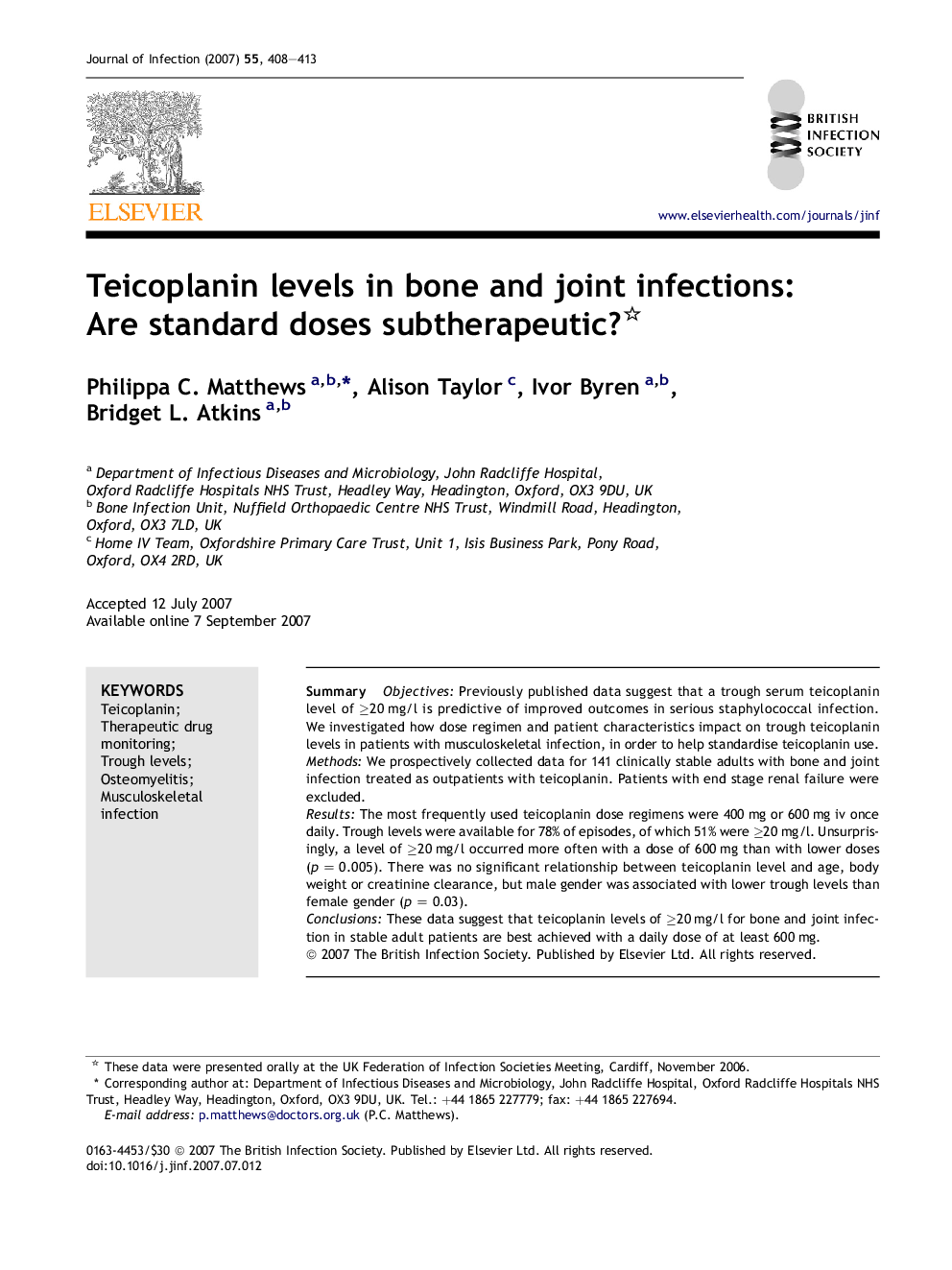| Article ID | Journal | Published Year | Pages | File Type |
|---|---|---|---|---|
| 3375910 | Journal of Infection | 2007 | 6 Pages |
SummaryObjectivesPreviously published data suggest that a trough serum teicoplanin level of ≥20 mg/l is predictive of improved outcomes in serious staphylococcal infection. We investigated how dose regimen and patient characteristics impact on trough teicoplanin levels in patients with musculoskeletal infection, in order to help standardise teicoplanin use.MethodsWe prospectively collected data for 141 clinically stable adults with bone and joint infection treated as outpatients with teicoplanin. Patients with end stage renal failure were excluded.ResultsThe most frequently used teicoplanin dose regimens were 400 mg or 600 mg iv once daily. Trough levels were available for 78% of episodes, of which 51% were ≥20 mg/l. Unsurprisingly, a level of ≥20 mg/l occurred more often with a dose of 600 mg than with lower doses (p = 0.005). There was no significant relationship between teicoplanin level and age, body weight or creatinine clearance, but male gender was associated with lower trough levels than female gender (p = 0.03).ConclusionsThese data suggest that teicoplanin levels of ≥20 mg/l for bone and joint infection in stable adult patients are best achieved with a daily dose of at least 600 mg.
